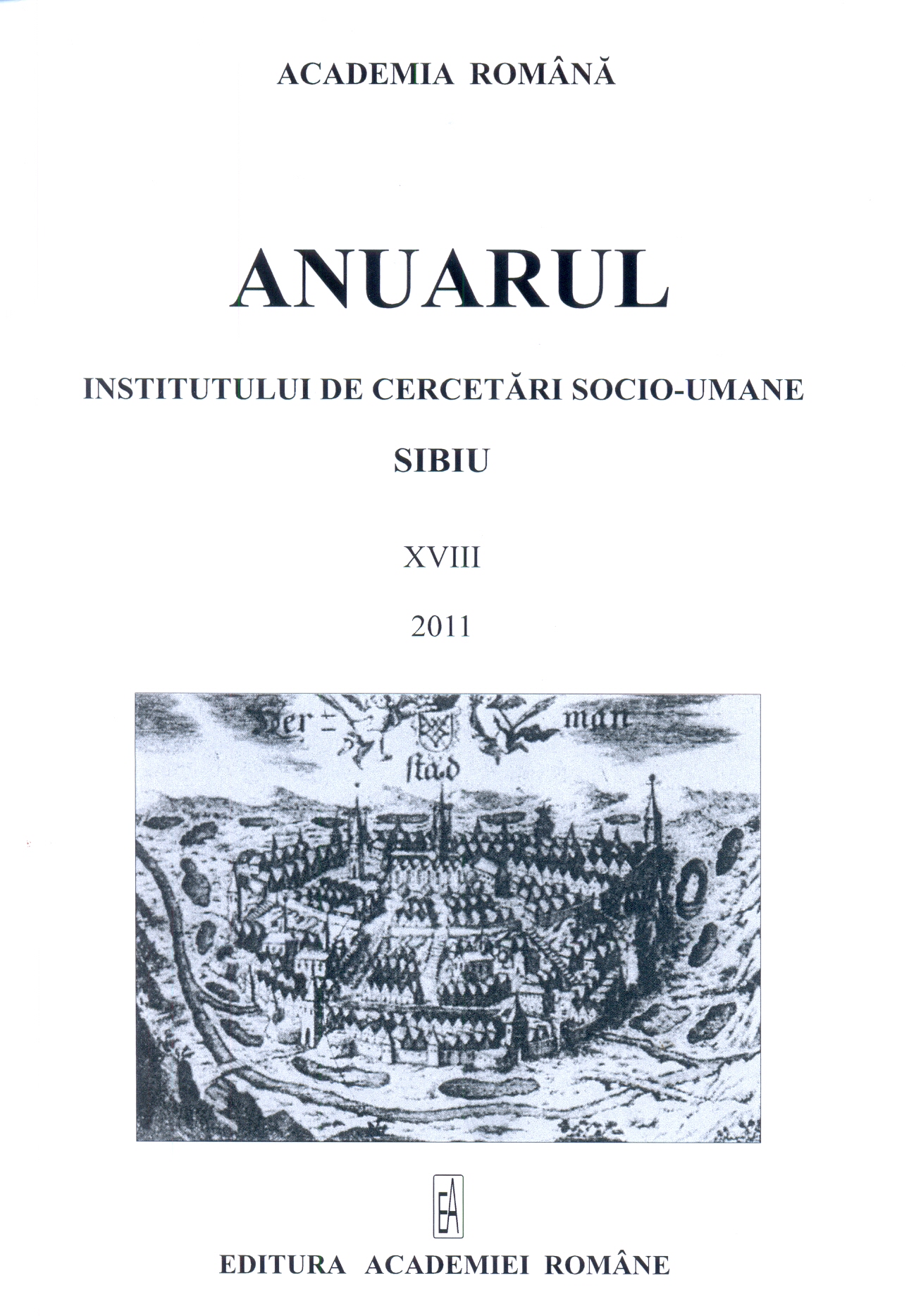ASPECTE ETNO-IMAGOLOGICE ÎN MANUALELE GERMANE DIN SUDUL TRANSILVANIEI: 1849–1918
ETHNO-IMAGOLOGICAL ISSUES IN GERMAN SCHOOLBOOKS OF SOUTHERN TRANSYLVANIA
Author(s): Ioan PopaSubject(s): Cultural history, 19th Century, Pre-WW I & WW I (1900 -1919), Ethnic Minorities Studies, Identity of Collectives, Sociology of Literature
Published by: Editura Academiei Române
Keywords: textbook; self-image; hetero-image; Saxons; Romanians;
Summary/Abstract: The present study analyses the process of ethno-identity construction from the perspective of the textbook speech. Twenty-one school instruments were analyzed in detail and grouped according to their publication period and level of usage as follows: for the two “Austrian” decades (1849–1867) – a reading book and two textbooks of Transylvanian History, utilizable in folk schools; for the five “Hungarian” decades (1867–1918) – six reading books for folk schools, four Homeland Geography books for folk, elementary and civil schools, two textbooks of Austro-Hungarian Geography, one for superior folk schools, civil schools and lower gymnasium classes and the other one for secondary schools and seminaries, five textbooks of Hungarian History, three of them for secondary schools, one for the folk education and the last one for civil girl schools and one auxiliary instrument of Homeland History, secondary level. The projection of ethno-identity by means of textbooks was the result of the action of two political environments: a regional, outlying one and a state, central environment. The pre-eminence of the first one, of Saxon nature, was endangered by the interventionism of the state after 1876, when the autonomy of the “Royal Land” was abolished and the assimilation claims of the Hungarian national state were found again more and more aggressively in the educational policy. This offensive of the Hungarian state produced a first major artificial change of the instrumentation and the national Saxon educational vision: the focalization of the homeland concept from the Saxon land/ Sachsenland and the Transylvanian multicultural one/ Siebenbürgen on the Hungarian national unitary state, associated with a notional and proportional change of the nation dimension, which was now particularly projected as a civic, trans-ethnic aggregate, the Hungarian political nation. The German linguistic polysemy allowed however a satisfactory use of the concept by loading Vaterland the significance desired by the central authorities (Hungary) and conserving Heimatland as space of the origins (Transylvania). An ever stronger connection to Deutschland (Germany) cannot be overlooked and the tendency of a priority assumption of German identity (see the festive and dense projection of the German/ der Deutsche) to the detriment of the Saxon one.
Journal: Anuarul Institutului de Cercetări Socio-Umane Sibiu
- Issue Year: XVIII/2011
- Issue No: 18
- Page Range: 195-227
- Page Count: 34
- Language: Romanian
- Content File-PDF

